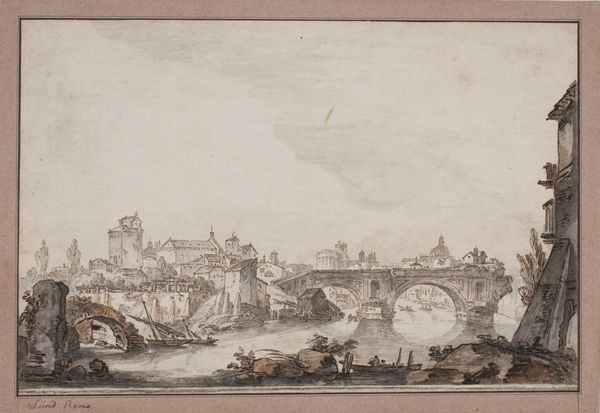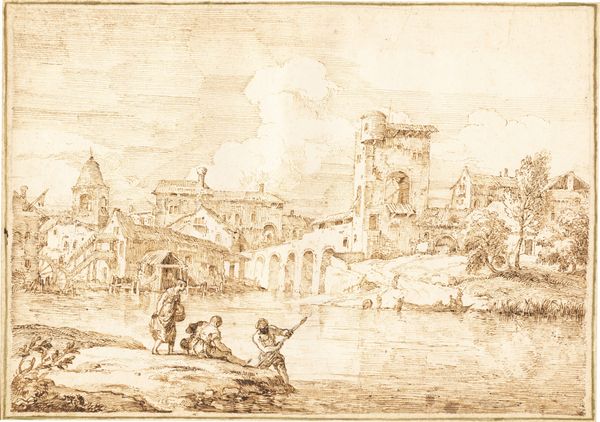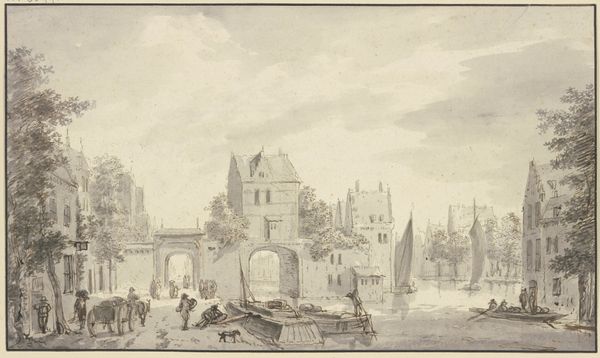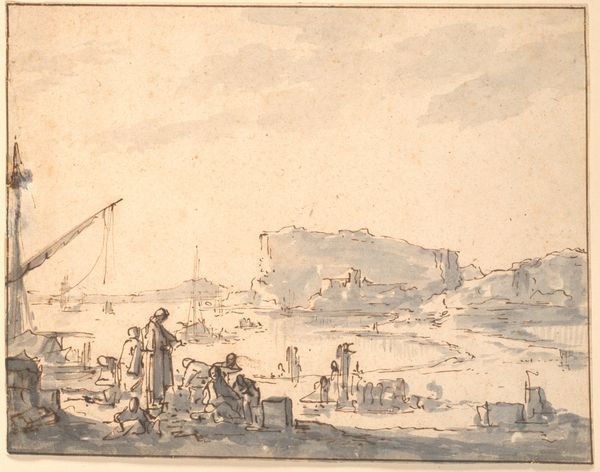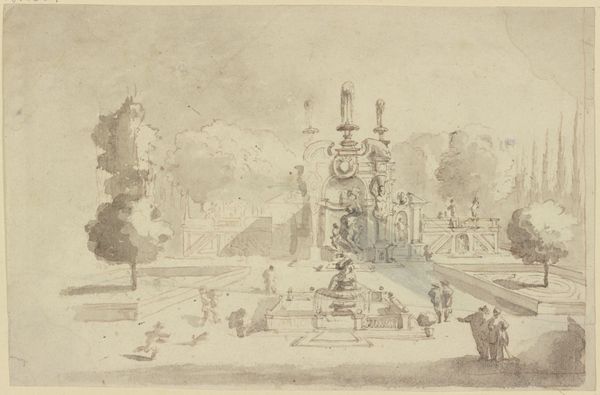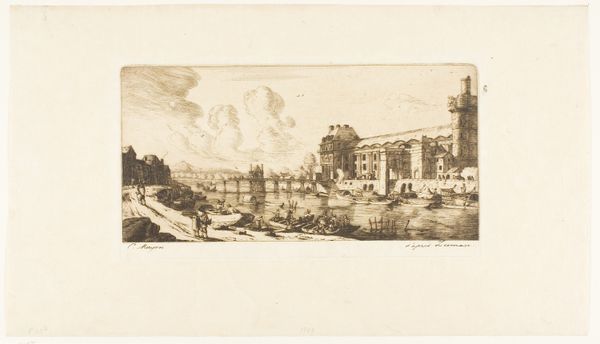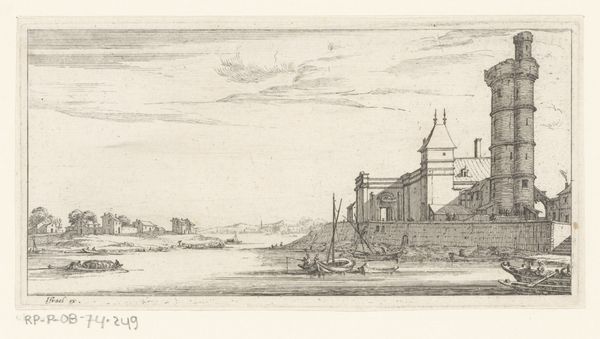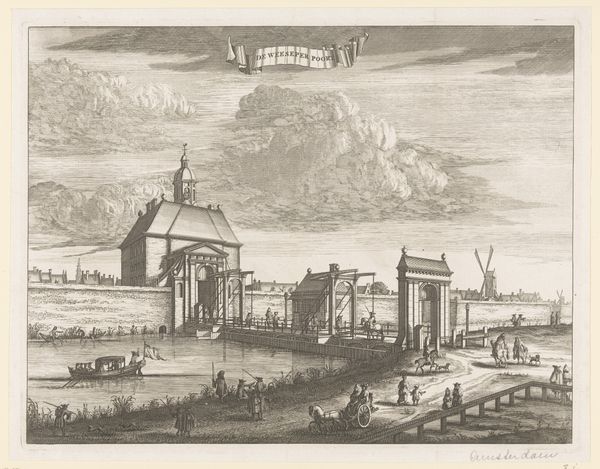
Lagoon Capriccio (recto); Architectural Scene (verso) 1697 - 1768
0:00
0:00
drawing, print, etching, watercolor
#
drawing
#
venetian-painting
#
baroque
# print
#
etching
#
pencil sketch
#
landscape
#
etching
#
watercolor
#
cityscape
#
watercolour illustration
Dimensions: 10 3/16 x 16 1/4in. (25.9 x 41.3cm)
Copyright: Public Domain
Curator: Canaletto, who was active roughly from 1697 to 1768, captured this "Lagoon Capriccio" in etching, wash, and pen—a composite scene which is part of the collection at the Metropolitan Museum of Art. What do you think? Editor: Immediately, I am drawn to the subtle monochromatic wash and how it constructs depth and imbues the architectural ruins with a melancholic atmosphere. Curator: Canaletto's compositions often served wealthy tourists' desires for picturesque views, sanitized depictions of the city that romanticized the decay and poverty experienced by ordinary Venetian people. Editor: Perhaps, but I see how the precise, almost mechanical lines of the architectural elements are set in contrast against the soft fluidity of the sky. There is a formal balance there. Curator: That juxtaposition may speak to the economic and political realities. The Doge's powers were diminished, and yet there was immense construction around these noble attempts to reify a sinking social order. Editor: Regardless, notice the orthogonals receding to the horizon, creating the illusion of vastness and spatial coherence. I can appreciate the artist’s mastery of perspective even as I question the work's representational motives. Curator: Those elements reflect not just perspective, but a perspective *of* privilege—whose voices are muted, whose labour and lived reality obscured by the fantasy he presents here? Even in something so formally precise, it’s essential to engage with these issues of power and representation. Editor: Perhaps we can see it both ways: appreciating the inherent technical qualities of the artwork while considering its context of creation. Curator: Absolutely, and maybe, in examining art through multiple lenses, we become more alert to how our own cultural positioning shapes our responses.
Comments
No comments
Be the first to comment and join the conversation on the ultimate creative platform.
